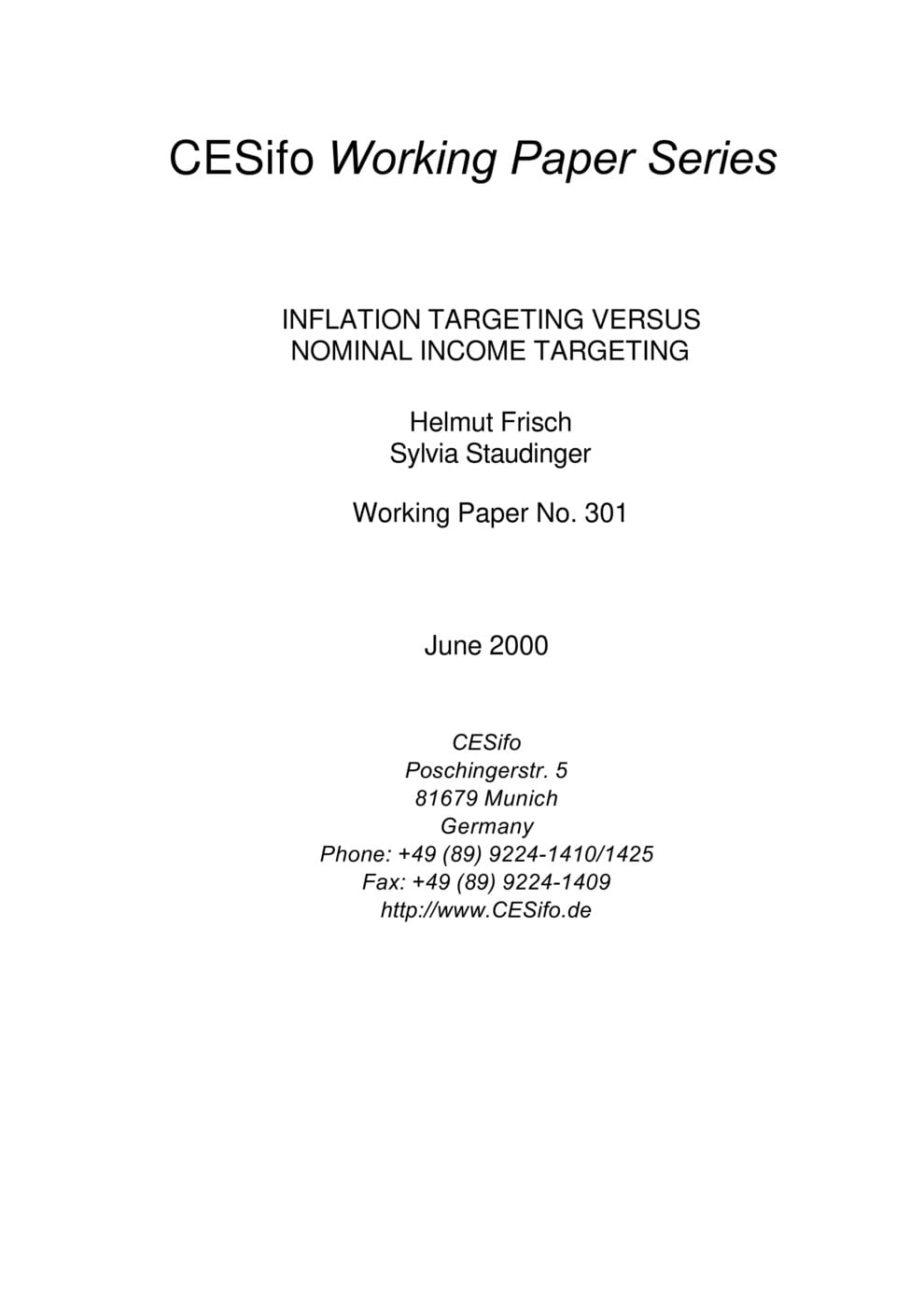Inflation Targeting versus Nominal Income Targeting
CESifo, Munich, 2000
CESifo Working Paper No. 301

In this paper we analyze flexible inflation targeting and nominal income targeting as two different monetary strategies in a simple dynamic macromodel. Furthermore we analyze inflation targeting in a two-period time-lag version of the model. The key results of our paper are: First, for both targeting regimes optimal monetary policy response leads to a shock-dependent feedback rule. Second, a demand shock is completely offset by both monetary strategies. Third, in case of a supply shock there is a significant difference between the two different targeting regimes. Under inflation targeting the policy makers face a trade-off between inflation and output stabilization. This trade-off depends on the weight F the policy makers attached to output stabilization relative to inflation stabilization in the loss function. In contrast, under nominal income targeting policy makers face a constant trade-off between inflation and real output growth: An increase in inflation leads to a fall in real output growth by an equal amount. Finally we analyze inflation targeting in a two-period time-lag version of the model. The qualitative results about the trade-off between inflation and output growth remain the same as in the basic model without time lag.